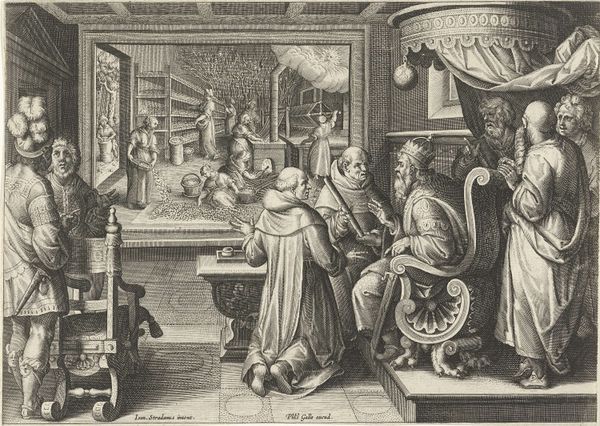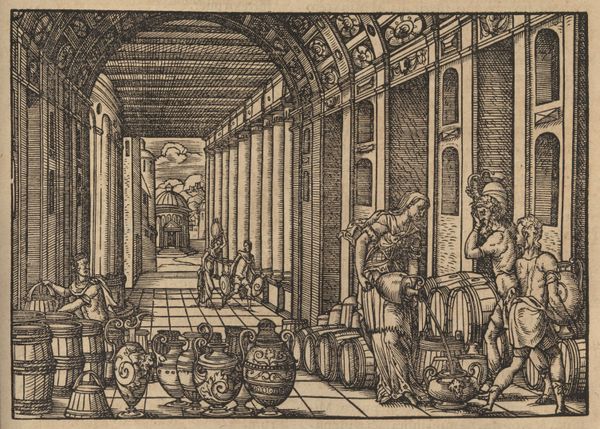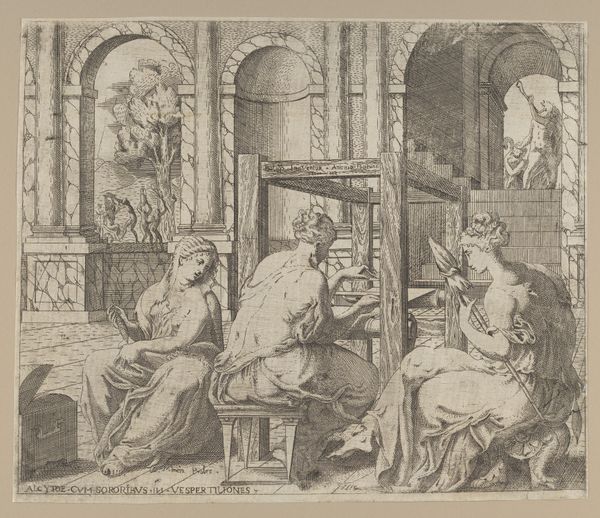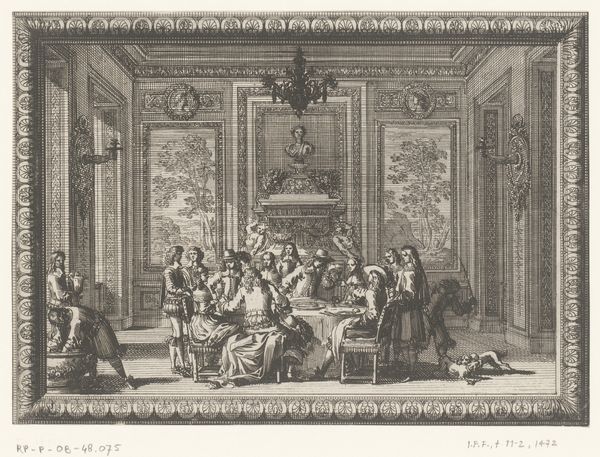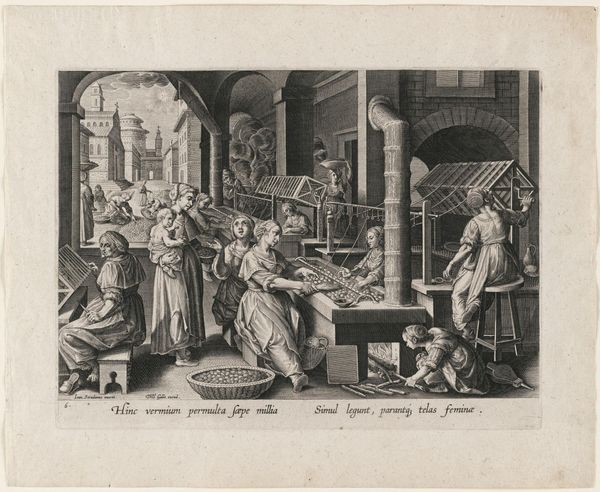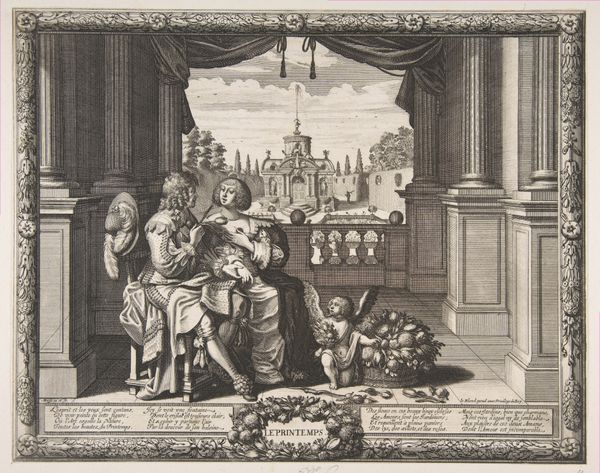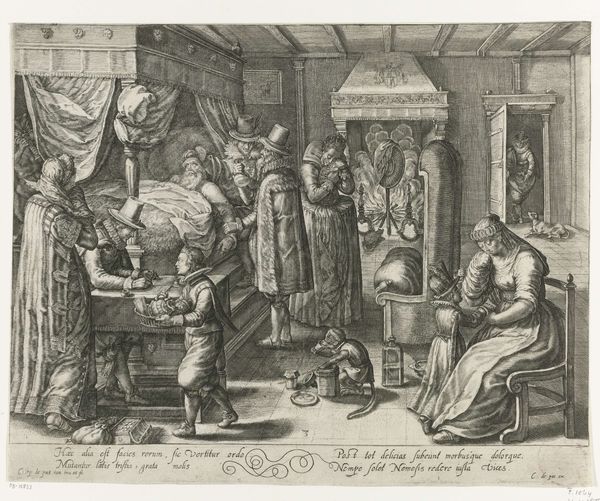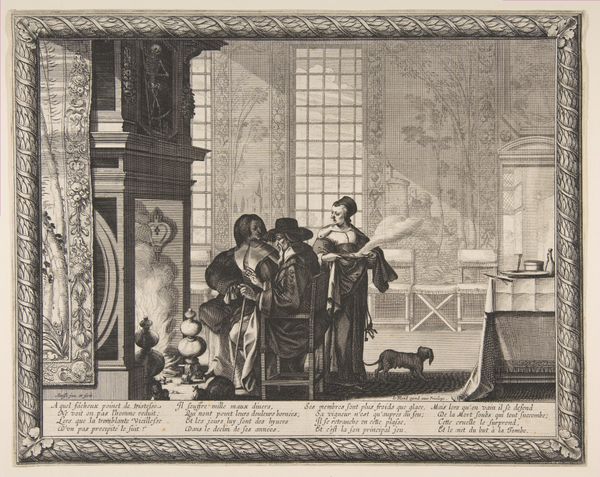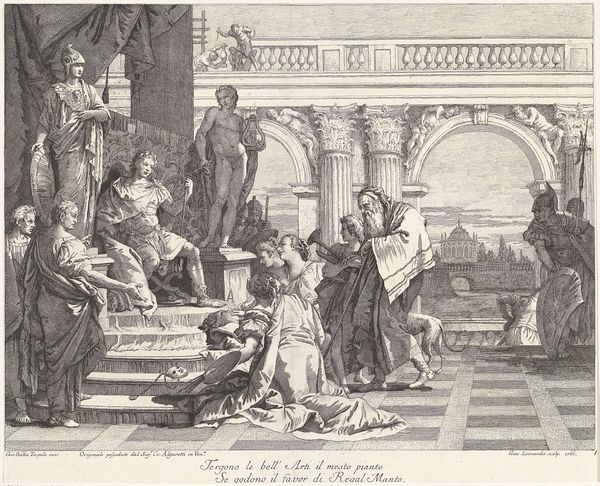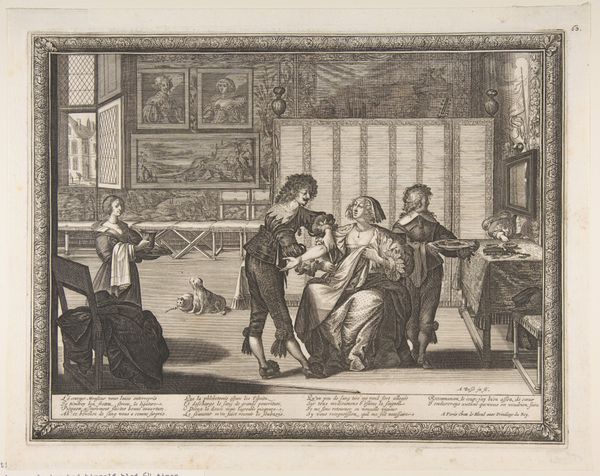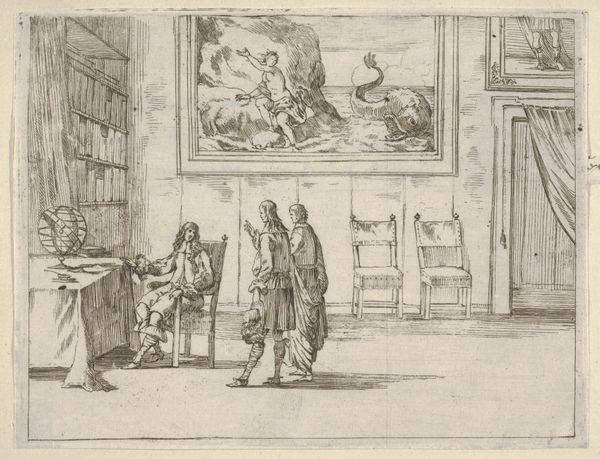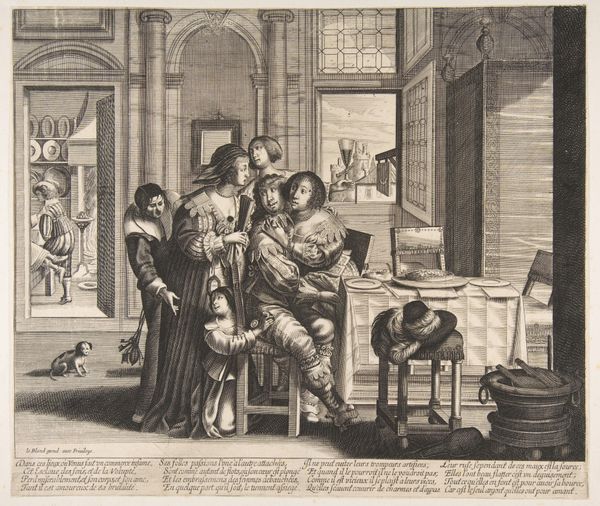
drawing, print, engraving
#
drawing
#
allegory
#
baroque
# print
#
landscape
#
figuration
#
men
#
line
#
genre-painting
#
engraving
Dimensions: Sheet (trimmed): 9 7/8 × 12 5/8 in. (25.1 × 32 cm)
Copyright: Public Domain
Curator: This engraving is entitled "Air" by Abraham Bosse, created between 1643 and 1653. Editor: It strikes me as a tableau of controlled domesticity and hidden desires, all meticulously rendered. Curator: Indeed. Note the precise lines creating depth and spatial recession. Bosse utilizes the rigid architectural framework to compartmentalize and present different aspects of air, one of the four classical elements. The perspective and composition—balanced yet dynamic—invite close visual examination. Editor: I'm struck by the figures' attire. They suggest a certain class, a leisure facilitated by a system where air, and perhaps freedom itself, isn't available to everyone. Look how that caged bird becomes a charged symbol within that context. Is it beloved, or merely possessed? Is the woman tending to the bird in care or control? Curator: An intriguing reading! Formally, I am drawn to the use of contrasting textures, especially between the ornate costumes and the stark, geometric floor tiles, to activate the scene. Editor: And beyond texture, what about that cupid figure at the rear of the scene? It almost feels threatening, given that he is placed next to the exit of the stately home, but faces the pair by the cage. In relation to that, consider the positioning of figures and how gender is being portrayed—are we not looking at something of a patriarchal display? Curator: While I appreciate your interpretation of these iconographic relationships, my interest remains in Bosse's ability to organize a composition based on the formal relations, lines and perspectival rendering within the image to establish meaning. His meticulous attention to detail encourages viewers to engage with art in a more active fashion. Editor: Perhaps! For me, considering the broader social history enriches my understanding of what would have otherwise come across as simply an allegorical tableau. In considering who had access to these types of displays, it unlocks so much of what that symbolic imagery means. Curator: I am happy to say that our different viewpoints can only broaden an understanding of Bosse’s engraving; whether one considers it from a formal perspective, or one engages it through sociohistorical contexts. Editor: Agreed; it’s in that dialectic tension where the artwork comes alive.
Comments
No comments
Be the first to comment and join the conversation on the ultimate creative platform.
